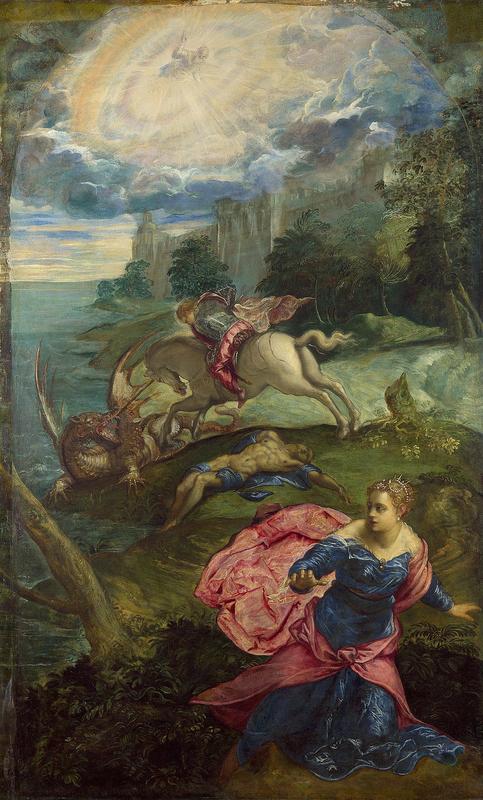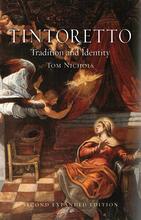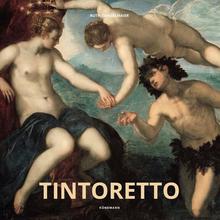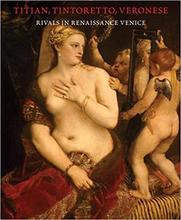More about Saint George and the Dragon
- All
- Info
- Shop

Sr. Contributor
Here Tintoretto paints a beautiful princess running away in fear, pictured also is Saint George slaying a dragon.
Saints are typically known for two things: feats of badassery and martyrdom. Saint George is no exception, and our artist has chosen to capture the far less tragic part of his legend.
When a dragon was terrorizing a village, Saint George showed up to save the day. Well, it just happened to be the day that a beautiful princess was in danger. The dragon had taken up residence near the village and had been demanding daily sheep sacrifices. When the sheep ran out, the townspeople turned to a Hunger Games style lottery to sacrifice one child a day. The legend doesn’t specify how long this went on prior to the princess drawing the proverbial short stick.
Unlike Saint Martha, Saint George didn’t try to charm the dragon with prayer - he just went for the kill, as showcased by our artist. In the original story, Golden Legend, he delayed the killing and kindly asked the princess to borrow her girdle for use as a dragon collar. He then proceeded to lead it around the village until everyone, including the king, had converted to Christianity. Once the incredibly strange hostage situation ended, he did finally, mercifully, kill the dragon.
Saint George’s legend has been a popular subject for artists, but Tintoretto’s take on it was unusual for placing so much emphasis on the princess and putting the actual dragon slaying in the background. Tintoretto is known for his lively narrative depiction so here he aimed for an action shot of the legend rather than the typical focused shot of the hero.
It’s also worth noting that, in Golden Legend, the princess didn’t run away. As the tale goes, Saint George just happens to walk by while she’s sitting in front of the dragon’s lair waiting to be brutally killed and eaten. He asks her what’s going on and she tells him to get the heck out of there. She doesn’t beg for her life, instead she pleads with him to save himself and not share her terrible fate.
The dead body laying at the feet of the dragon is also a bit of an oddity out of line with the Golden Legend. Either our artist wanted to add a bit of extra gore to the composition, or he preferred the version of the story where the princess’s hand was offered to anyone who could kill the dragon and perhaps he wanted to show that Saint George wasn’t the only one to take a stab at it.
Sources
- Mingren, Wu. "Saint George, The Dragon Slayer: The Legend Behind the Hero." Ancient Origins. April 23, 2019. Accessed July 17, 2019. https://www.ancient-origins.net/history- famous-people/exploring-famous-legend-st-george-and-dragon-005794.
- Peter Russell, and Tintoretto. Delphi Complete Works of Tintoretto. Delphi Classics, 2018.
- Vellodi, Kamini. Tintoretto's Difference: Deleuze, Diagrammatics and Art History. London: Bloomsbury Academic, an Imprint of Bloomsbury Publishing Plc, 2019.
- Voragine, Jacobus De. Golden Legend. Createspace, 2013.
Featured Content
Here is what Wikipedia says about Saint George and the Dragon (Tintoretto)
Saint George and the Dragon or Saint George Killing the Dragon is a 1555 or 1558 painting by the Venetian artist Tintoretto. It was acquired by the English collector William Holwell Carr, who bequeathed it to the National Gallery, where it now hangs.
The slaying of the dragon by Saint George was a popular motif for early painters. The legend relates how the city of Silene in Libya was being terrorised by a dragon and the townspeople eventually forced to provide it with a supply of victims chosen by lot. On the occasion portrayed in the picture the King's daughter had been chosen and sent to her death dressed as a bride. By chance Saint George arrived on horseback and killed or wounded the beast with his lance, allowing the princess to escape.
Tintoretto's composition is unusual in that the viewer's eye is drawn to the foreground figure of the escaping princess with her bright pink cloak or to the bright heavenly light in the sky giving divine blessing for the deed. St George himself, in the very act of spearing the dragon, is consigned to the background. in the middleground lies the dead body of a previous victim, lying as if crucified, possibly a warning that his death would be avenged.
Check out the full Wikipedia article about Saint George and the Dragon (Tintoretto)















